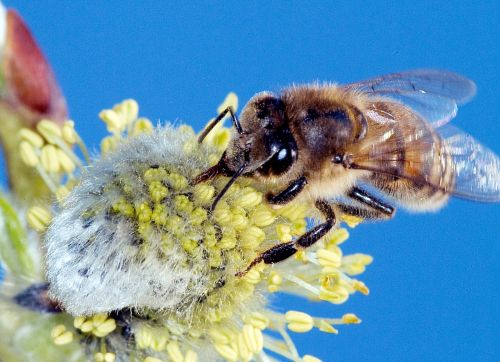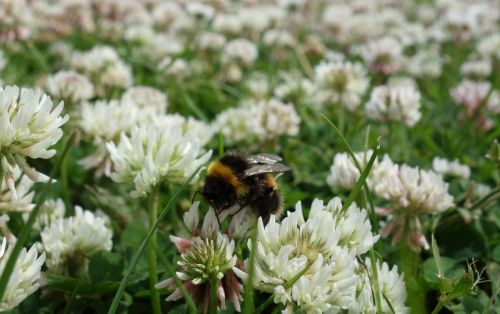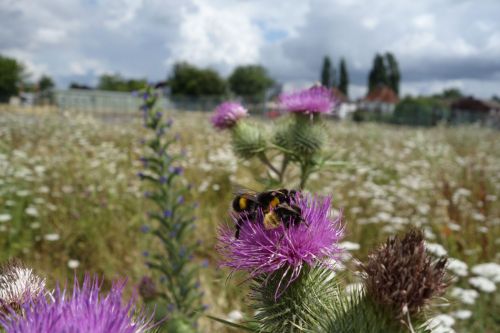12th November 2014 Get Calderdale Buzzing! was launched in June as our local contribution to a much wider national campaign to promote the health of bees and other pollinators – seeing that they do so much for us – and now we’re beginning to see some results from that bigger push. Everone’s been joining in. On 4th November the government’s National Pollinator Strategy was launched (more about that later); we’ve just had the results of the Great British Bee Count; and also available is a lot of new advice and guidance on what we can do to help.
First of all here’s a charming animation (6 mins) – good for children and adults – that explains why bees are so important, how they are threatened and the most important steps we should take to protect them.
It’s part of a hive full of helpful information on the new Bees’ Needs website – what they need is ‘food and a home’. This includes information sheets for gardeners, farmers, road and rail corridor managers (think of all those verges and embankments), woodland managers and industrial site owners. There are also 13 case studies on what can be done for all types of site.

Here are the 5 basic messages from Bees’ Needs. In each case click on the link for more information:
1. Grow more flowers, shrubs and trees … that provide nectar and pollen as food for bees and other pollinators throughout the year. For example, pussy willow, primroses and crocuses in spring, lavenders, meadow cranesbill and ox-eye daisies in summer, ivy and hebes in autumn, and mahonia shrubs and cyclamen in winter.
2. Let it grow wild Leave patches of land to grow wild with plants like stinging nettles and dandelions to provide other food sources (such as leaves for caterpillars) and breeding places for butterflies and moths
3. Cut grass less often … and ideally remove the cuttings to allow plants to flower.
4. Don’t disturb insect nests and hibernation spots Avoid disturbing or destroying nesting or hibernating insects, in places like grass margins, bare soil, hedgerows, trees, dead wood or walls.
5. Think carefully about whether to use pesticides … especially where pollinators are active or nesting or where plants are in flower. Consider control methods appropriate to your situation and only use pesticides if absolutely necessary. Many people choose to avoid chemicals and adopt methods like physically removing pests or using barriers to deter pests. If you choose to use a pesticide, always follow the label instructions.

Now, what were the results of the Great British Bee Count? Maybe you downloaded the app and recorded one or more of the 832,110 bees spotted over the summer? Find out on this colourful infographic, also downloadable as a poster; (and if you’re a real bee enthusiast you’ll want a spreadsheet with all the data).
So which were the most frequented habitats, and the most counted bees?
– Allotments won the prize for type of habitat where the most numbers of bees were seen per count: an average of 12 compared to countryside (10), garden (8), school grounds (7), park (7) and roadside (4).
– Yellow and black bumblebees were the most spotted type of bee in all regions: 304,857 sightings. This category includes some of our most common bee species: buff-tailed bumblebee, garden bumblebee and white-tailed bumblebee.
– Honey bees were the second most-seen in all regions (193,837 sightings) with 42% seen in rural areas, 30% in suburbs and 28% in urban areas. This could change next year due to a rise in urban beekeeping.
– The tree bumblebee was the third most-spotted, with 69,369 sightings and of these ginger-tufted bees found nesting in bird boxes. This highly adaptable species arrived in southern England from mainland Europe in 2001 – this year’s count shows it has now spread throughout England, Wales and Northern Ireland.
There’ll be another Great British Bee Count in 2015.

Finally for those people that like reading this sort of thing, both the National Pollinator Strategy and its Supporting Document contain lots of information about how the commitments of the strategy will implemented over the next 3 years. To single out a few bits:
– Throughout the Strategy a whole series of ‘priority actions’ are identified and these are collected together in a handy list on page 38 of the Supporting document.
– In the main Strategy page 15 is the section on wild flower meadows, and pages 18-19 describe how various types of landowner can help.
– One partner agreeing to take part that caught my eye is the National Trust, in view of their large estate at Hardcastle Crags. What they’ve promised to do is listed on pages 28-29 of the Supporting document.
– There’s an Annex to the Supporting document listing the range of typical actions that a number of local authorities have taken.
More important, however, maybe than any particular recommendation is the fact that we have a National Strategy for Bees (and other pollinators) at all, and for that we must thank the campaigning organisations like Friends of the Earth and Buglife (and the Co-op before them) and everyone who supported their demands. Now we need to get on with implementing our Local Strategy for Bees … which is Get Calderdale Buzzing!